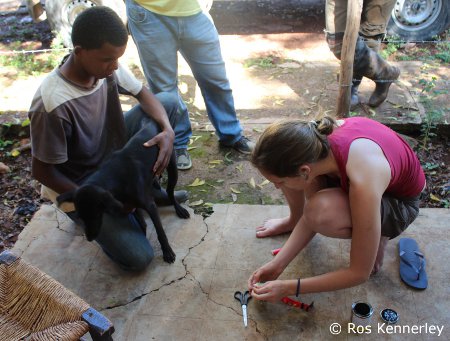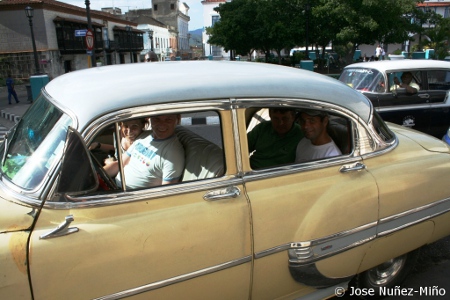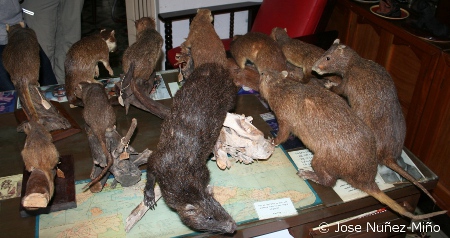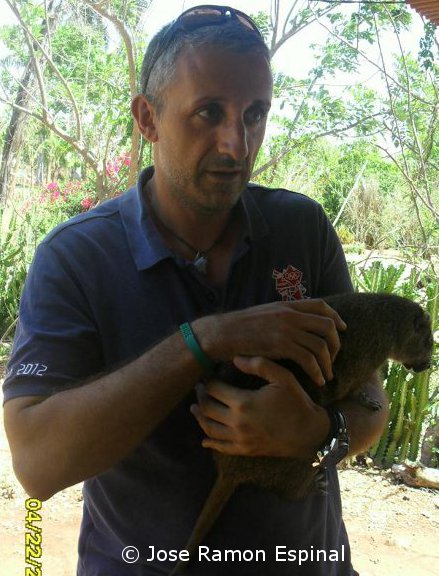We owe all of you a huge apology since it has been over two months since our last blog update. The whole team has been so rushed off our feet that we have not had much of a chance to write a blog. However, let me update you with some of what’s been happening.
As in previous years, our numbers have swollen since we currently have two MSc students working with the project. Claudia Libre from a local University (Instituto Tecnologico de Santo Domingo or INTEC) has been working with us since January. The Ornithological Society of Hispaniola (SOH) field team in the north of the country (funded by the BBC Wildlife Fund) has been carrying out interviews designed by Claudia in conjunction with MSc students from previous years (such as Cristina Fernandez) and the rest of the Last Survivors team in order to uncover the perceptions and attitudes of local communities towards Hispaniolan solenodon and hutia, as well as other wildlife. They have already interviewed well over 200 people and are simultaneously carrying out talks and presentations independently in rural communities.

At the beginning of April, Jessica Knapp from the University of East Anglia joined the team and has been working very closely with Ros Kennerley. The aim of Jess’s project is to establish where local dogs roam at night, the dogs being the main cause of solenodon deaths. Jess’s work will map the dogs’ roaming range and therefore find out how their activity overlaps with local solenodon populations.
Ros has continued her ground breaking work radio tracking solenodon and hutia using GPS. Jess, Claudia and Ros will all be winding down their field work over the next few weeks and will then start to analyse their findings – we are really looking forward to hearing about what they have discovered through their determination and hard work. It has definitely not been an easy ride for them and we think their results will be both interesting and useful.
Pedro Martinez (SOH) arrived back from the DESMAN course at the end of April. He found his three months in Jersey (the base of the Durrell Wildlife Conservation Trust Headquarters) to be both very rewarding and inspiring, and wrote a blog for EDGE about his experiences. Meanwhile, a large part of the team spent three weeks in Cuba to share our findings at a conference and meet fellow conservationists working with the Cuban solenodon (the only other solenodon species apart from our Hispaniolan solenodon) and several species of Cuban hutia.

We were very lucky to be joined by Dr. Sam Turvey as well as Dr Selina Brace from Royal Holloway College who has recently published an article that identifies three distinctive hutia populations on Hispaniola and is now looking at hutia populations more widely across the Caribbean.
Jose Ramon Espinal (Moncho), our outstanding SOH research assistant, had an experience of a lifetime as he stepped foot on an aeroplane for the first time and had the opportunity to visit a neighbouring country and the passionate field workers there. Jorge Brocca, the executive director of SOH and the project leader in the Dominican Republic, was the final member of the team and he, along with everyone else, relished the opportunity to meet and talk with colleagues on our neighbouring island.

We managed to visit all the major museum collections in Cuba, but it was sad to come across specimens of hutia that may already be extinct. We ventured into the forest a couple of times but the only hutia we managed to see were domesticated ones – although they were very cute it would have been better for us to have seen wild ones.
Everyone in Cuba was extremely welcoming and in the long term we hope to establish strong relationships with our new found Cuban friends in order to share our experience and knowledge to further the conservation of all the unique Caribbean mammals. Cuba has its own set of unique challenges but the rewards in terms of the benefit to wildlife are the same as on Hispaniola. We really hope the Last Survivors Project will have further opportunities to form a Caribbean-wide support network of likeminded conservationists.

We will try not to leave it so long before our next update although we really have our work cut out for us over the next few months. As always, thank you for all your support and encouragement.